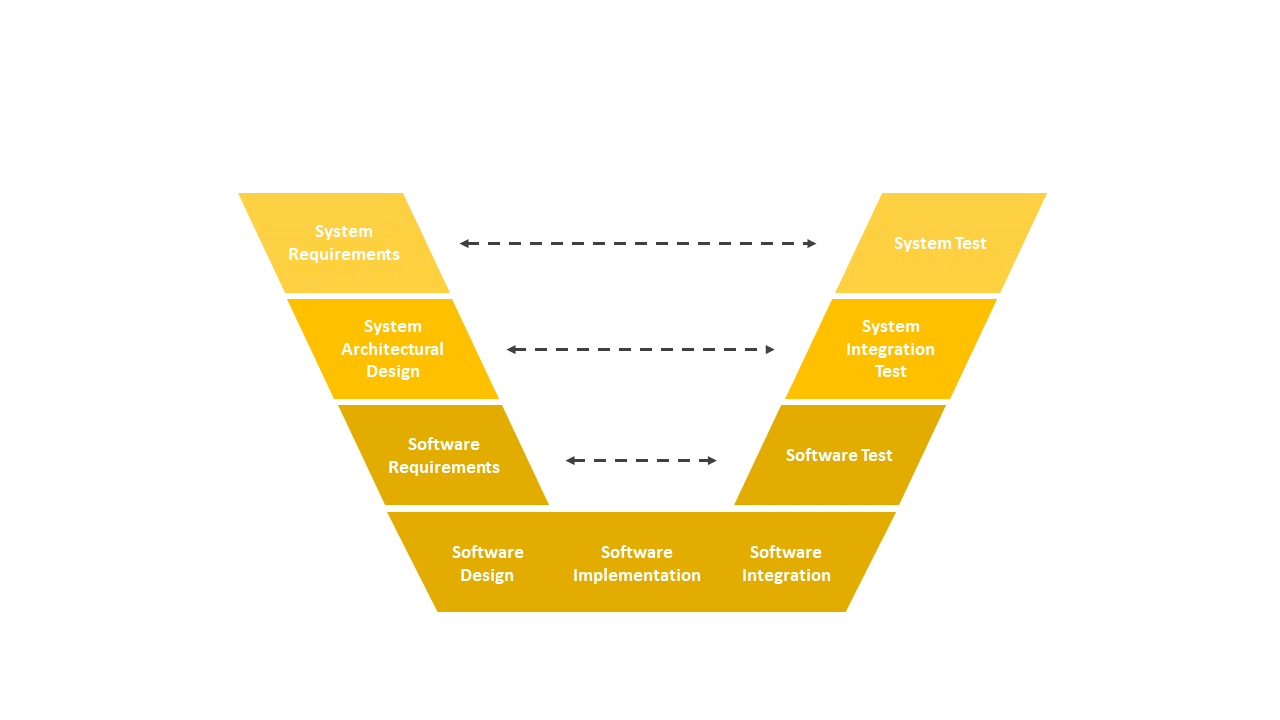Model-Based Systems Engineering (MBSE)
Manage streamlined workflows to address specific stakeholder needs using AMBER
Commonly used by the automotive and aerospace industries, model-based systems engineering (MBSE) employs formalized methodologies that rely on models to develop, design, analyze, verify, and validate technologies, from the initial concept phase to commercialization. These include model-in-the-loop (MIL), software-in-the-loop (SIL), hardware-in-the-loop (HIL), and vehicle-in-the-loop (VIL) simulations.
Additionally, increased vehicle design complexities, resulting from expanded powertrain and component options such as electrification, as well as the introduction of new technologies, including connectivity and automation, have heightened the reliance on MBSE to reduce costs and expedite development timelines. Given this vast number of technology options and wide range of requirements and expertise, a variety of tools must be used, both individually and in tandem. That’s why the Argonne National Laboratory Vehicle & Mobility Systems Group (VMS) developed our advanced model-based engineering resource (AMBER).
AMBER is a next-generation MBSE, designed from the ground up as an extensible framework that allows engineers to create, customize, and deploy workflows to fit their roles. Each unique, streamlined workflow consists solely of the tools and functionalities that are relevant to solving a particular mobility challenge.
AMBER’s extensive use of metadata information enables the development and deployment of dedicated workflows throughout the MBSE process—its patented algorithm automatically builds Simulink system models from individual systems and subsystems, enabling the evaluation of a very large number of technologies. AMBER allows you to manage individualized workflows for individual and multiple tools to:
- Simulate one to millions of individual vehicles to assess energy impact (paired with Autonomie, Argonne’s state-of-the-art vehicle energy consumption, performance, and cost system simulation tool);
- Assess the impact of connected and automated vehicle controls (paired with RoadRunner, designed to simulate both powertrain and vehicle longitudinal dynamics; SVTrip, which generates naturalistic vehicle speed profiles following training on large, recorded driving data sets; and Autonomie); and
- Quantify people and freight movement impacts (paired with POLARIS, a high-fidelity predictive transportation system model; SVTrip; Autonomie; and GREET).
AMBER also enables you to evaluate technology with hardware in an emulated environment (paired with RoadRunner for VIL).
Learn more about how AMBER can streamline your workflow to address stakeholders’ needs.
 V-Diagram for Software Development
V-Diagram for Software Development